What is it like to live in a lighthouse? In all weathers, from howling winds to bright sunshine? With a great view of the water and waves? Occasionally you see a ship on the horizon that, thanks to modern navigation technology, no longer needs the lighthouse on the coast. The days when lighthouses secured the lives of sailors are over. But the striking structures still stand.
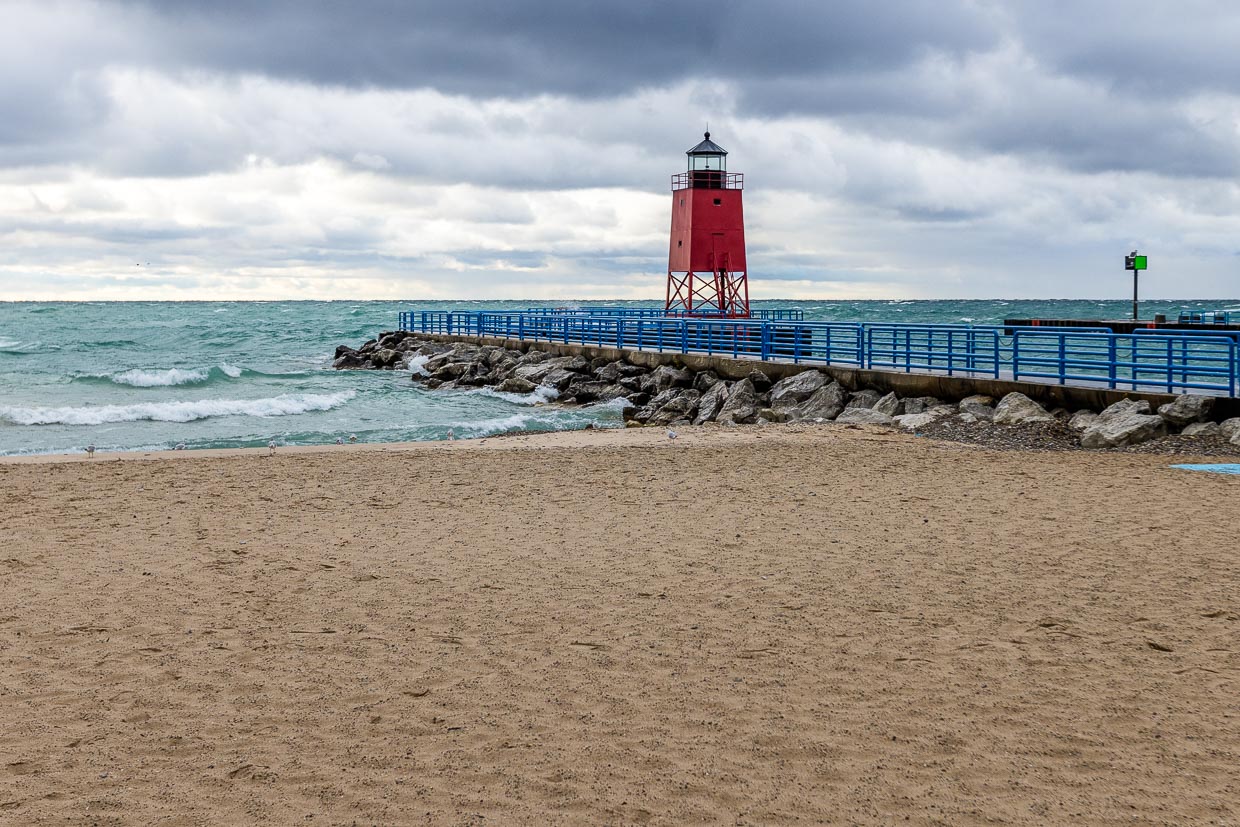
Today, lighthouses are ambassadors for their region. They are the shining center of logos, adorn travel brochures and even manhole covers. The West Michigan Tourist Association lists 105 lighthouses on its map. The vacation route along the lighthouses leads once around the entire Lake Michigan. Many of the lighthouses can be visited and you can even stay in some of them. At Mission Point Lighthouse near Traverse City, you can try out life as a temporary lighthouse keeper.
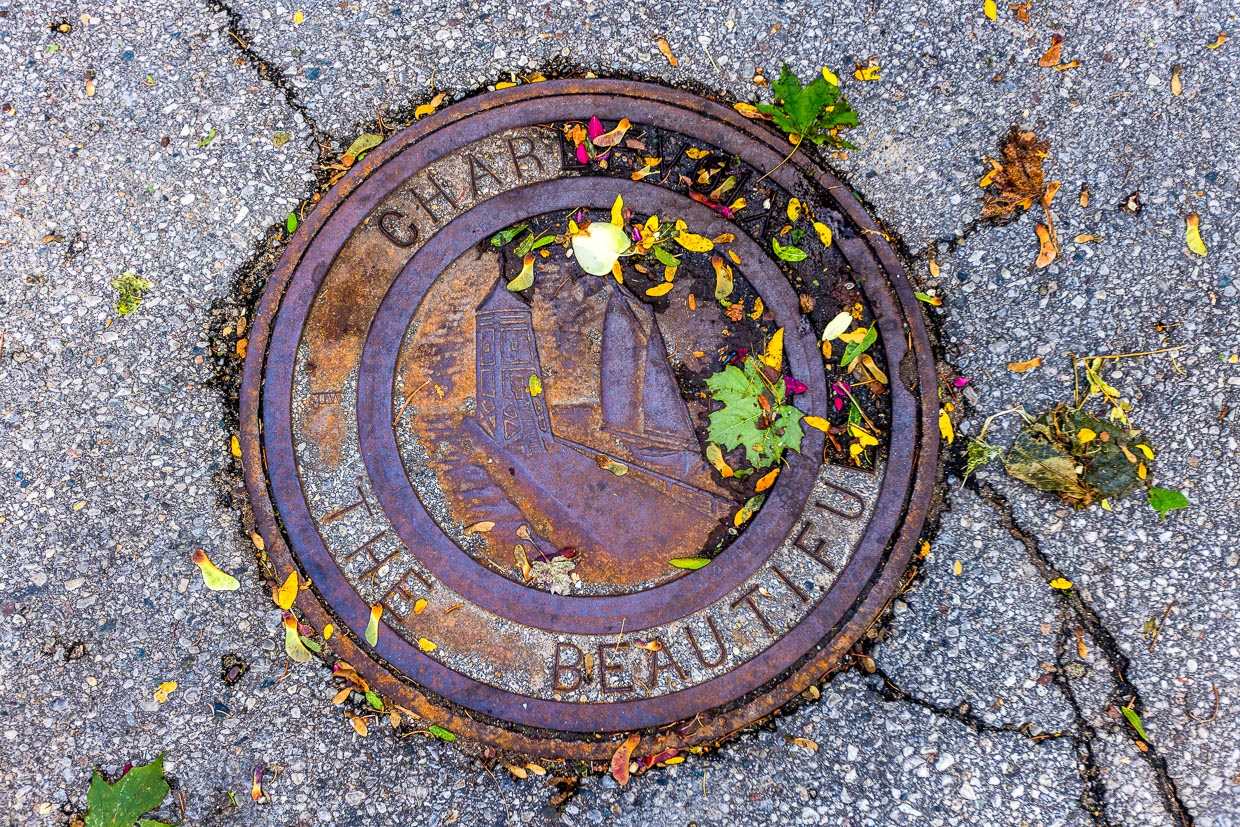
Be a keeper! Active vacation in the lighthouse
The Old Mission peninsula divides Grand Traverse Bay into two arms. The headland is only 27 kilometers long and so narrow that you have a wonderful view of the lake in many places. The Old Misssion Peninsula lighthouse is located at the tip of this headland. It was built in 1870 to guide ships loaded with timber safely into the almost 50-kilometer-deep bay to Traverse City. Today, the lighthouse houses a small museum, a souvenir store and a vacation apartment. There are orchards, vineyards, hiking trails and cycle routes on the peninsula. It smells like a vacation.
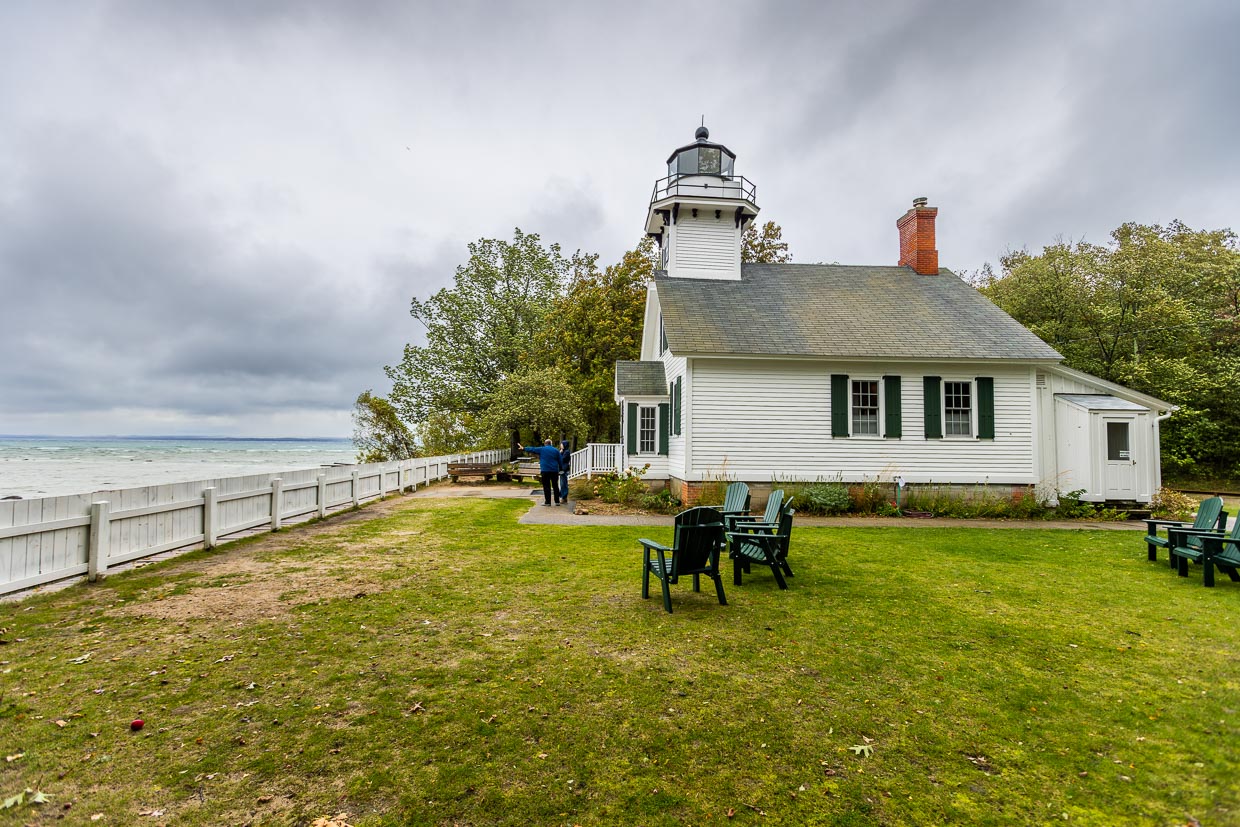
The Mission Point Lighthouse is a very special place for a vacation. However, the vacation apartment in an exposed location can only be rented by those who apply to be a temporary lighthouse keeper. This job is particularly popular with women. The apartment can accommodate up to four people. From the living room, you can get directly behind the sales counter in the souvenir store. The duties of a lighthouse keeper include selling tickets, small talk with museum visitors, providing information on the history of the lighthouse and managing congestion on the steep staircase up to the dome of light.
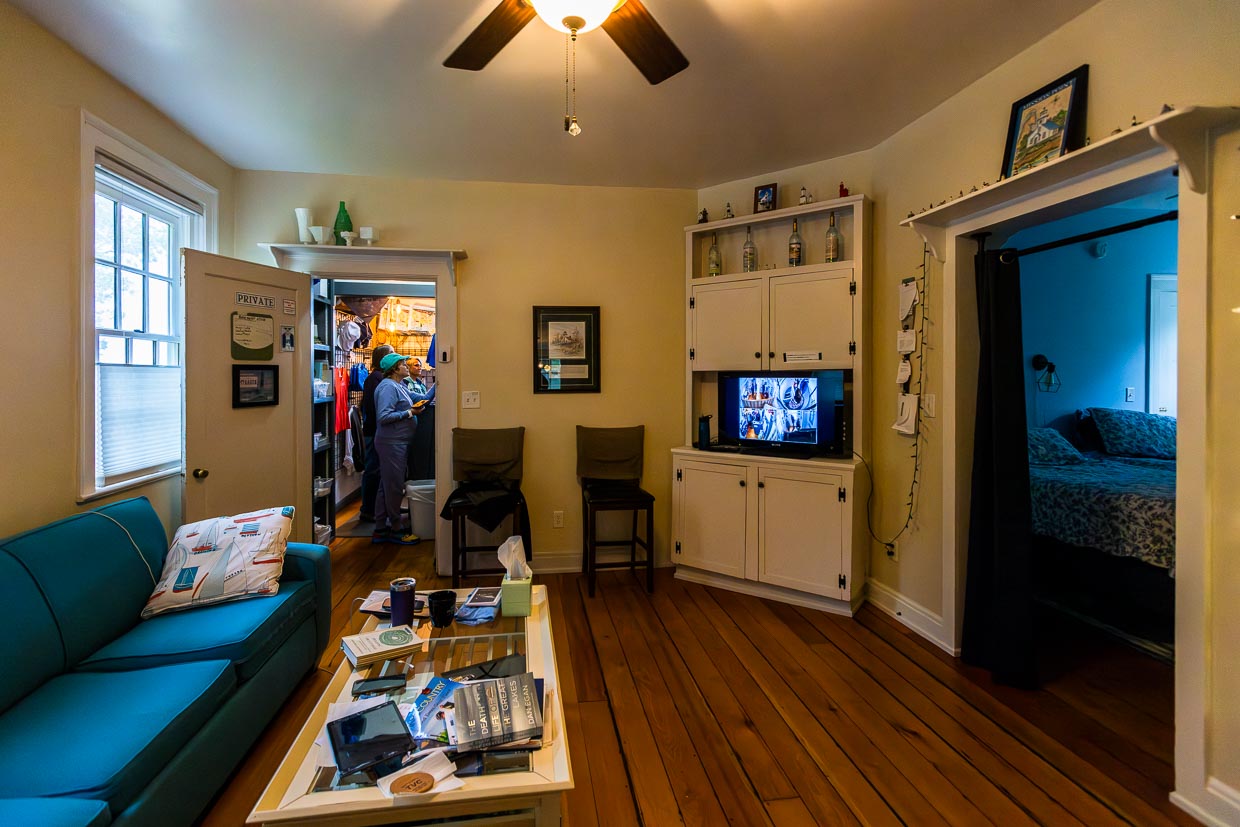
But early in the morning and after 5 pm, the lighthouse belongs to the keepers. They spend these hours walking on the beach or through the surrounding forest. In the evening, you can also visit one of the nearby wineries. You can’t book a stay at Mission Point Lighthouse, you have to apply, be at least two people and want to meet people from all over the world. The Keeper Program is very popular and helps the community to preserve the historic site. Accommodation must be paid for by the guests, but at less than 300 dollars per week it is very affordable. The real value lies in the work of the volunteers. The summer months at Mission Point are fully booked months in advance. For the community, this means solid planning security in order to be able to maintain the historic site. And the working guests? They rave about the view from the top of the tower at sunset, the starry sky and the heavenly peace when the day tourists have gone.
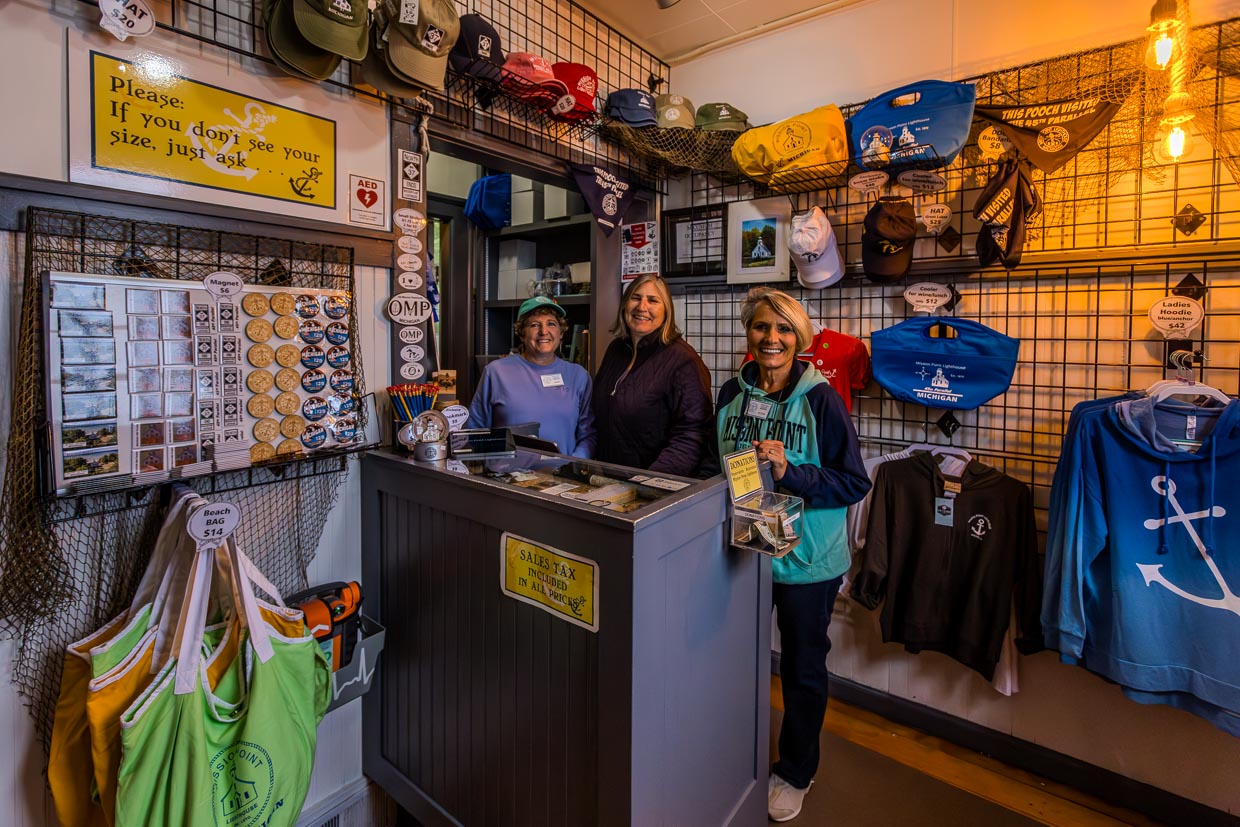
Lighthouse in women’s hands
In 1933, the last lighthouse keeper at Mission Point switched off the light. The lighthouse was in operation for over fifty years and had seven lighthouse keepers during this time. In the small exhibition at Mission Point, an entire room is dedicated to a woman. Sarah Lane lived at Mission Point for 26 years. She was the wife of Captain John Lane and worked with him at the lighthouse. They watched ships, kept the light burning and looked after the grounds.
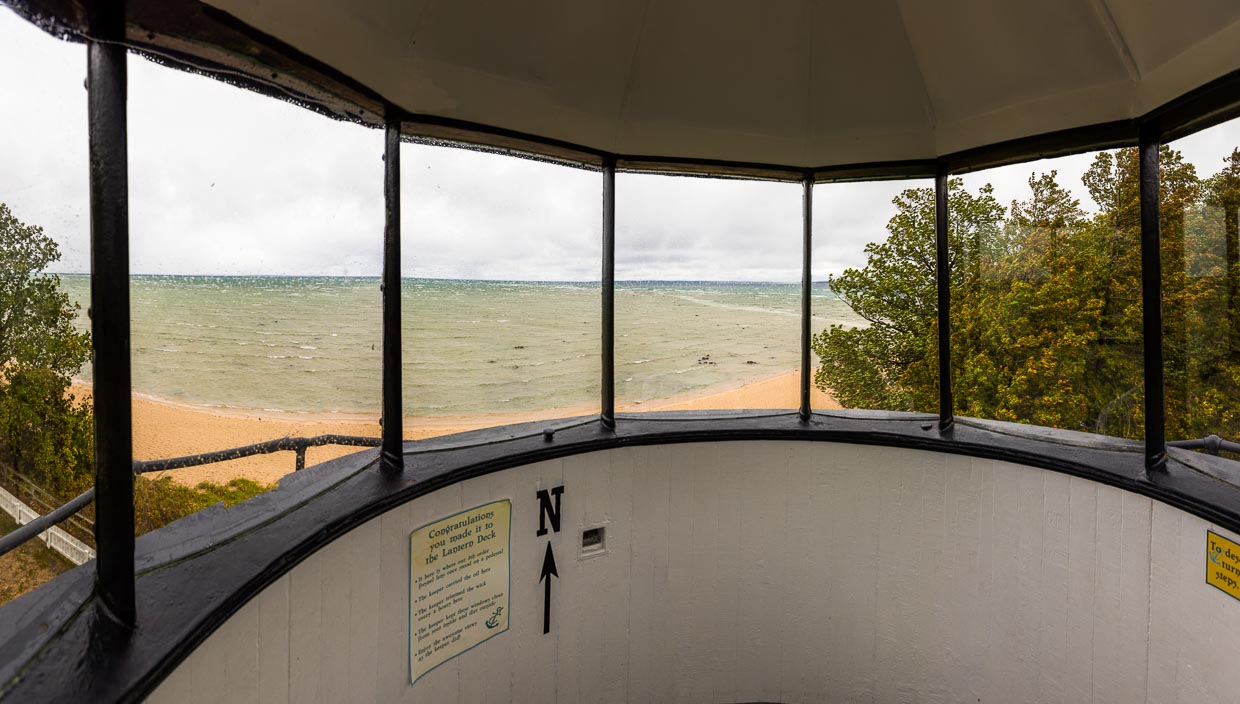
In December 1906, John Lane died. Sarah then became the first and only female keeper in the history of Mission Point at the age of 67. The local newspaper at the time reported on this unusual story of a woman doing the work of a lighthouse keeper. Sarah Lane was praised for her sense of duty and her good work. What went unnoticed was that she only received half the salary for the same work after her husband’s death. Her annual salary was 540 dollars. Some of her personal belongings are on display at Mission Point and visitors can learn about her daily work and constant responsibility to provide a reliable beacon for shipping around the Old Mission Peninsula.
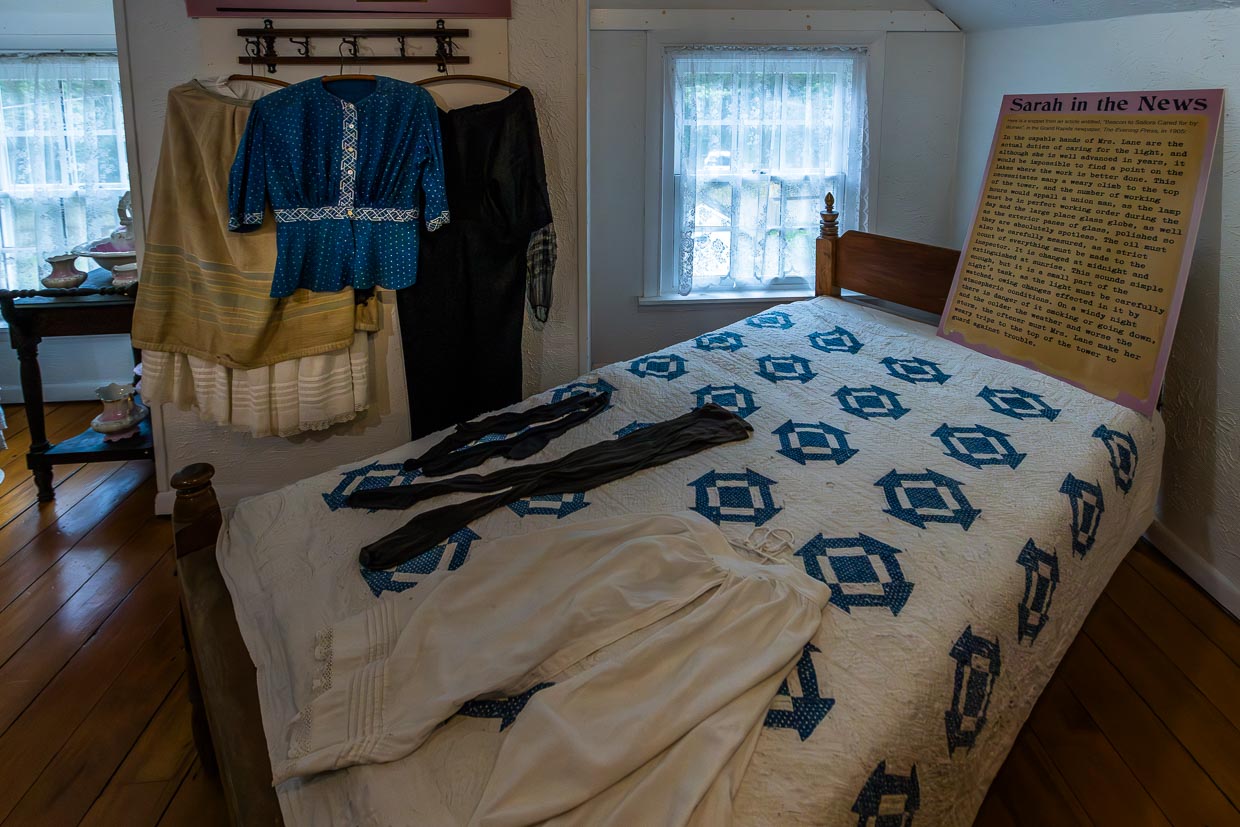
Lighthouse hopping
Ginger Schultz stands on the steep staircase and points to the dome light. This lighthouse has been out of service since 1933. An automatic buoy light near the coast took over the job of lighthouse keeper. Many years later, new jobs were created around the now historic building. Ginger Schultz is the lighthouse manager and is also in charge of the keeper program. For some years now, there have been more applicants than available booking weeks. Between May and October, lighthouse keepers from all over the country come to the lighthouse and rave about the tranquillity in the evening, the sunsets in the lighthouse dome and the friendly encounters with people from all over the world. Many groups are already booking their volunteer services for next year as soon as their week of service is over. Ginger Schultz talks about friends who go lighthouse hopping. Out of a total of 129 lighthouses in Michigan, around a dozen offer a keeper program.
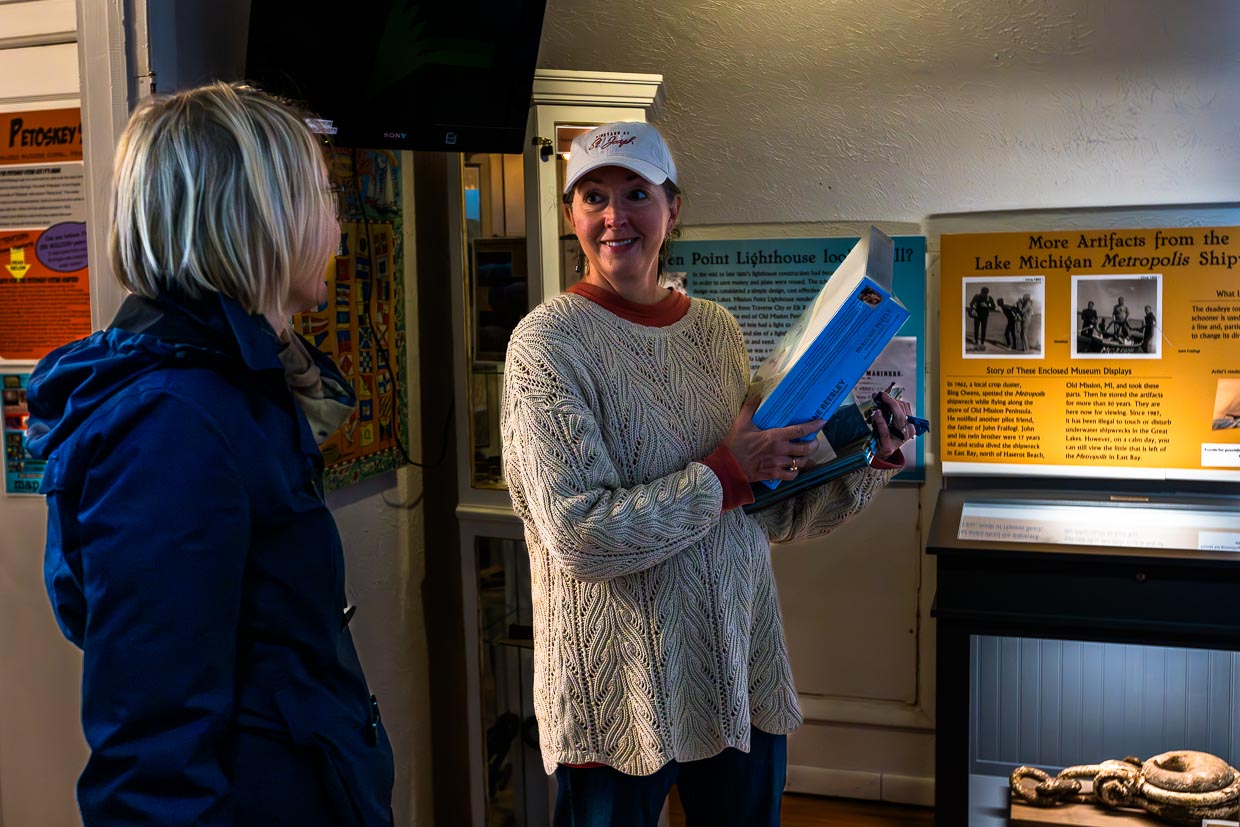
Sea rescue on Lake Michigan
In the middle of the 19th century, more and more lighthouses secured the coasts of the Great Lakes. But the lighthouses were not always able to prevent shipwrecks. The Maritime Museum commemorates the history of the U.S. Life-Saving Service, the U.S. Coast Guard and shipping on the Great Lakes. This is the original US life-saving station at Sleeping Bear Point, which was moved to its current location to avoid being buried by shifting sand dunes.
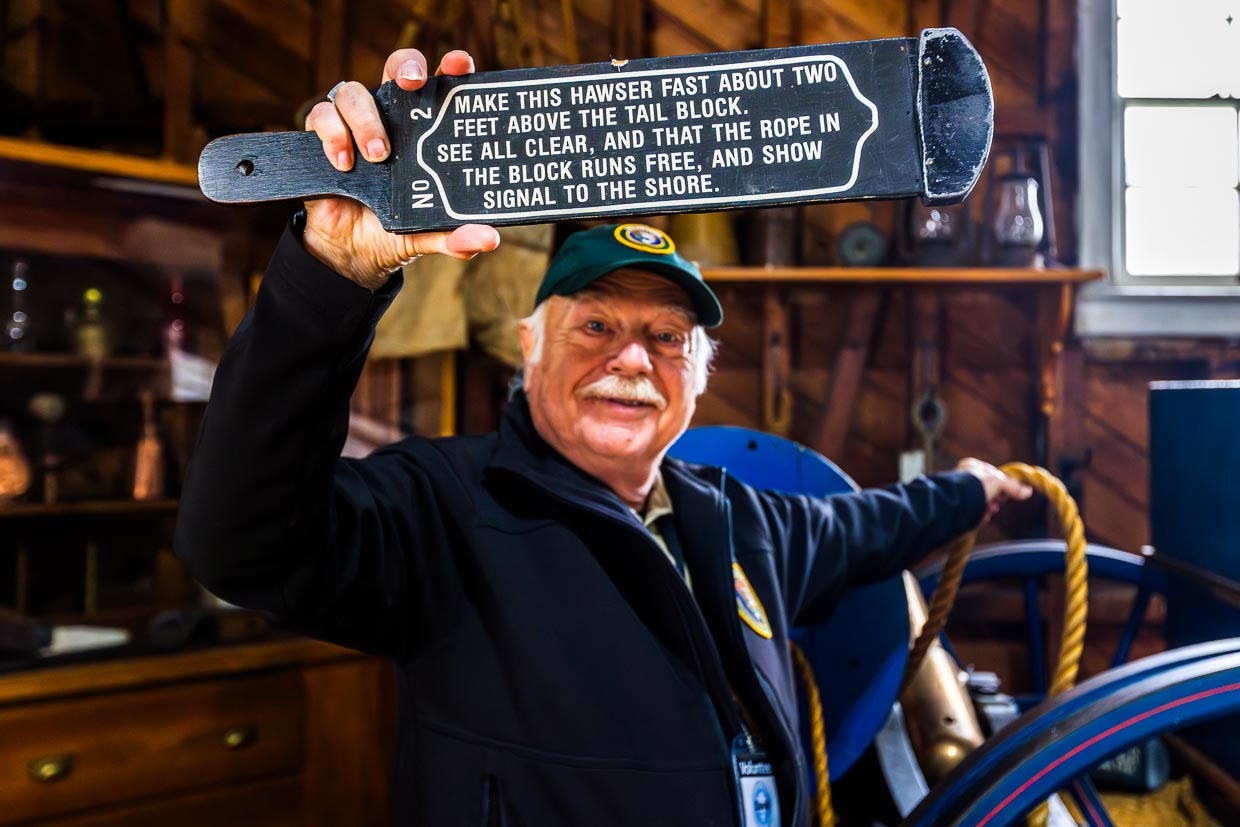
Life-saving equipment is on display in a small boathouse next to the museum. A museum employee explains how these items were used in the early 1900s to rescue sailors in distress in the Manitou Passage. With the Lyle Gun, a lifeline could be shot over 400 yards from shore to a ship in distress to bring the crew safely to shore.
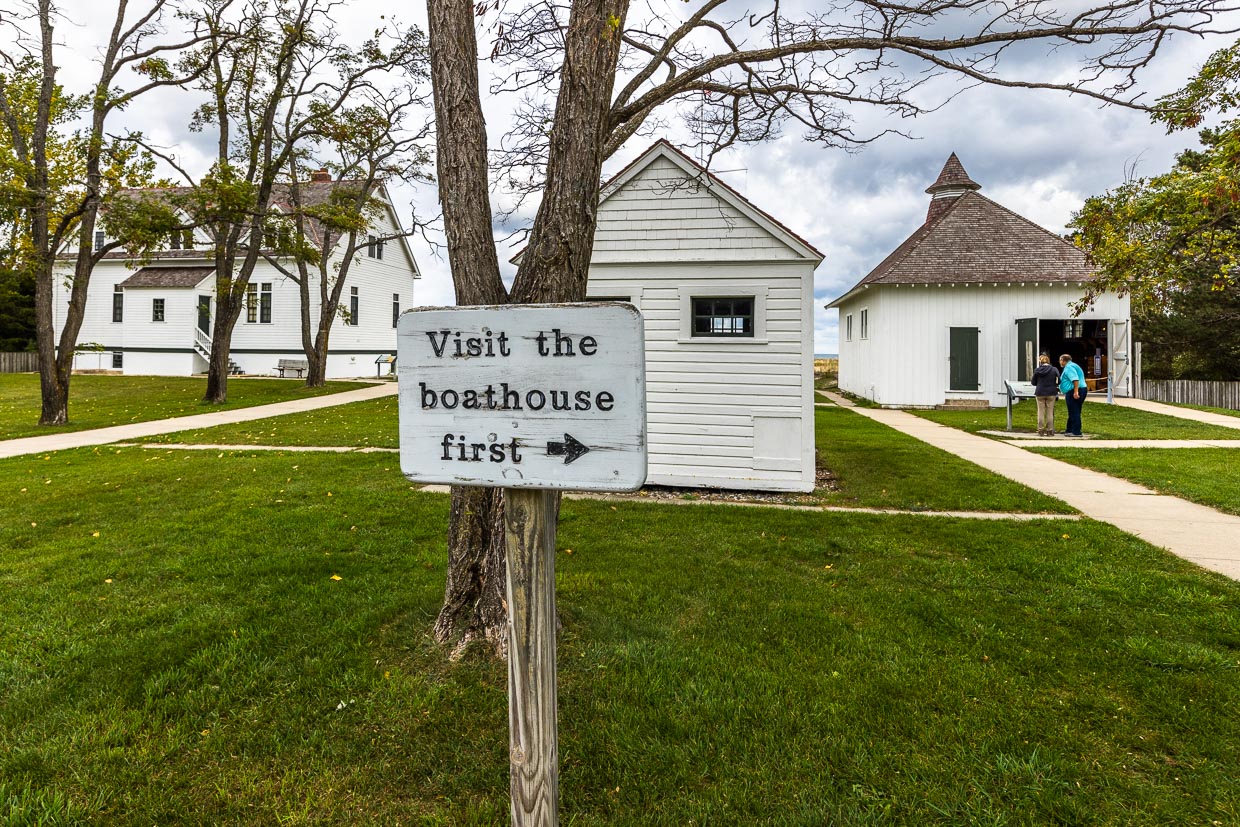
The Sleeping Bear Point Coast Guard Station Maritime Museum is located west of Glen Haven. From here it is not far to the region’s main attraction, the Sleeping Bear Dunes. This is a dune landscape with steep sandy mountains that slope down to the lake. The rugged bluffs, which rise up to 140 meters above Lake Michigan, offer great viewpoints of the two Manitou Islands. A strong westerly wind often blows up here and you can imagine how dangerous it can be to navigate along the shores of the Great Lakes. There are almost 50 shipwrecks in the Manitou Passage alone. Lake Michigan also has the scale of an ocean in terms of shipwrecks.
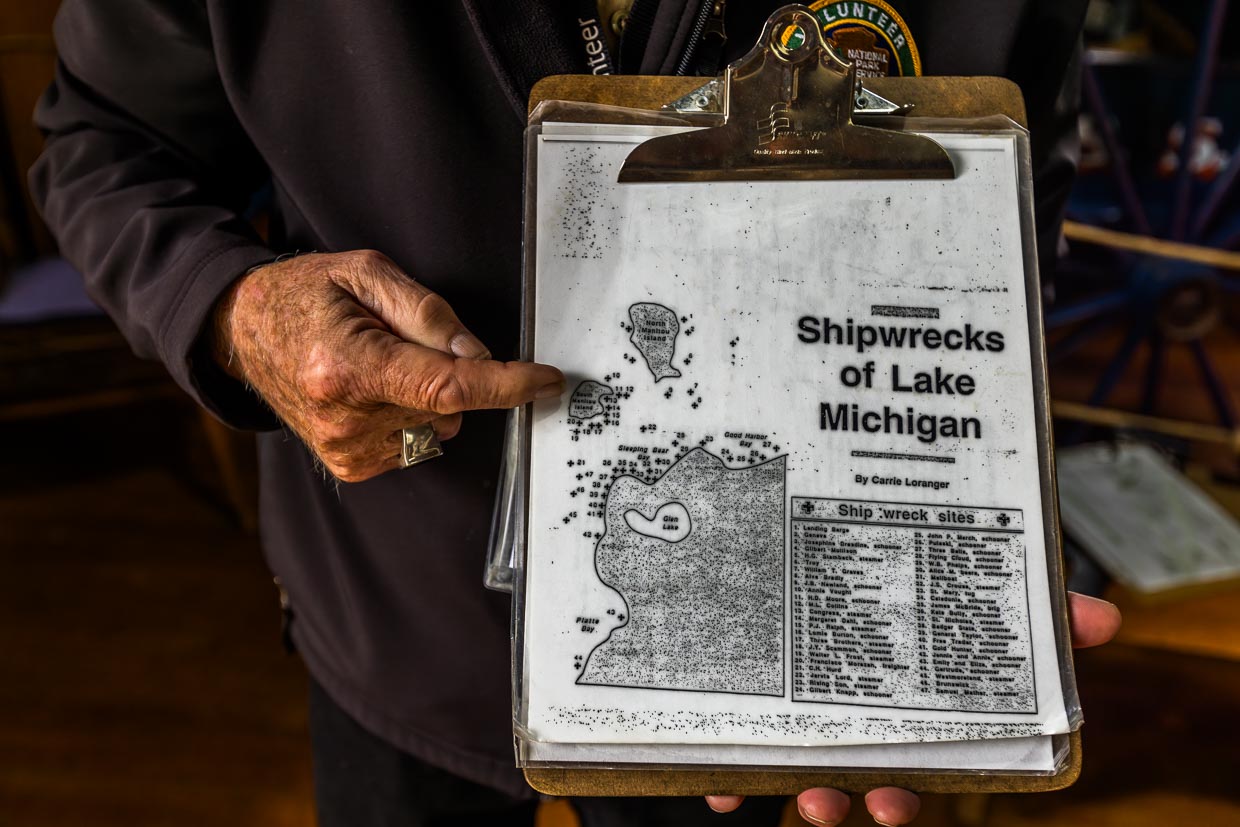
Vacation in Traverse City and Grand Traverse Bay
If working as a temporary lighthouse keeper doesn’t work out, there are of course other accommodations and ways to pass the time. For some years now, the microclimate has been attracting more and more winegrowers to the peninsulas along the 45th parallel. Old Mission Peninsula and Leelanau together form the Traverse Wine Coast with 25 wineries. Riesling, Chardonnay, Gewürztraminer, Pinot Gris, Cabernet Franc, Pinot Noir and Merlot are cultivated in the cool, maritime climate of the two peninsulas. The winegrowers offer wine tastings and culinary events throughout the year. Chateau Chantal, a vineyard in the middle of the peninsula, overlooks a small green island, now known as Power Island. Over 100 years ago, its former owner already appreciated the recreational value of the region. Henry Ford bought the island in 1917 and used it as a retreat and for undisturbed conversations between friends. Thomas Alva Edison, Harvey Firestone and Theodore Roosevelt were among them.
Be A Keeper – The Mission Point Lighthouse Keeper Program
Our journey through Michigan starts in the capital Detroit with classics and new attractions of a city in transition. The huge Michigan Central station, once a ruined line, celebrated its comeback as a research location for mobility in 2023. However, the options for getting around Detroit have long been extremely diverse, as mobility in Motown works pretty well even without a car. The journey continues to Traverse City on Lake Michigan with the Sleeping Bear Dunes National Park. Mission Point Lighthouse is one of these lighthouses with a history. Why the lighthouse in Grand Traverse County is particularly popular with women is explained in the story about Sarah Lane and the keeper program. We continue on to Charlevoix. The town has a maritime flair and lots of stones. There are Petoskey stones on the beach and Earl Young’s famous stone houses in the town. USA without cars? A fact on Mackinac Island. The success story of Michigan’s heavy industry began with a defeat.
The research was supported by Traverse City Tourism and Pure Michigan

